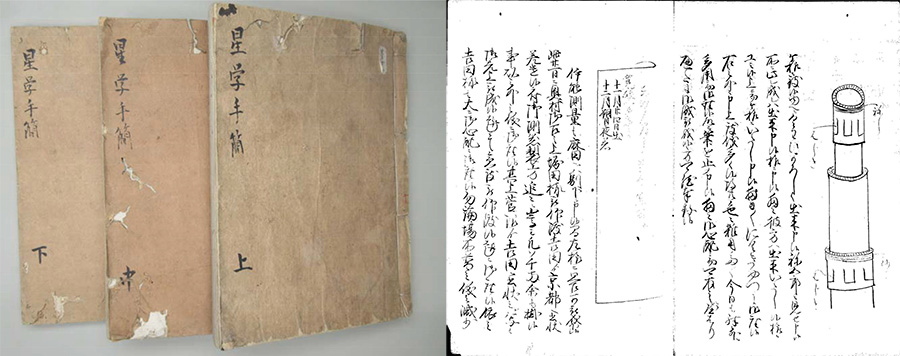Samurai Astronomers’ Letters to be Registered as an Important Cultural Property
| Topics

Seigaku Shukan, a set of Edo Period documents held by NAOJ, is going to be registered as an Important Cultural Property, according to a report from the Council for Cultural Affairs to the MEXT Minister on November 18, 2022. NAOJ holds a diverse collection of old documents related to astronomy, calendars, and Japanese mathematics. Many of these documents, including Seigaku Shukan, were once owned by the Tenmonkata, the shogunate astronomers.
Seigaku Shukan is a series of three books, mainly compiled from letters exchanged between Takahashi Yoshitoki (1764–1804) and Hazama Shigetomi (1756–1816). The editor is thought to be Yoshitoki’s second son, Shibukawa Kagesuke (1787–1856).
Yoshitoki was a prominent arithmetician interested in European astronomy, whereas Shigetomi was a wealthy merchant talented in devising and developing observational instruments. The two were colleagues, both having studied under another late Edo Period astronomer Asada Goryu (1734–1799). Appointed to the Tenmonkata, Yoshitoki was ordered by the Tokugawa government to create a new calendar. With the cooperation of Shigetomi, he observed the heavens and surveyed the geographical features in locations across Japan including Edo (now Tokyo), Osaka, Kyoto, and Nagasaki. Eventually he completed the Kansei Calendar based on precise observations and the latest theories of that era. Yoshitoki also mentored Ino Tadataka (1745–1818), the cartographer who would later create the first surveyed map of Japan.
Seigaku Shukan, a compilation of the frequent correspondence between Yoshitoki and Shigetomi, tells the ins and outs of Japanese astronomy of the late Edo Period: how astronomy observations and calendar studies were conducted, how observing and surveying instruments were devised and developed, how the Kansei Calendar was created, and how Tadataka surveyed across Japan. This set of books, owned by the Shibukawa family until the end of the Tokugawa shogunate, later went to the collection of Kokichi Kano, a Japanese science philosopher of the early Meiji Period, and was then donated to Tokyo Astronomical Observatory. As a valuable historical record, Seigaku Shukan is now also stored in the form of microfilm copies that are digitized and available online.